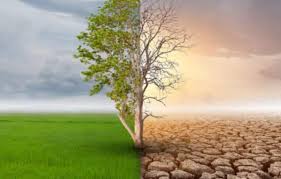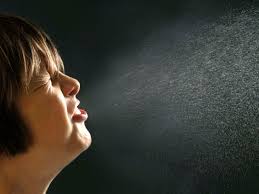Meta Description:
Discover how climate change is affecting public health in the US.
Learn about rising health risks, actionable solutions, and how to protect your community.
Introduction
Climate change is no longer a distant threat—it’s a present-day reality with far-reaching consequences.
While much of the conversation focuses on environmental impacts, the effects on public health are equally alarming.
In the US, rising temperatures, extreme weather events, and shifting ecosystems are exacerbating health risks for millions of people.
From respiratory issues caused by poor air quality to the spread of infectious diseases, the intersection of climate change and public health is a critical issue that demands immediate attention.
This article explores the multifaceted impact of climate change on public health in the US, providing actionable insights, data-driven analysis, and practical solutions to mitigate these risks.
Whether you’re a concerned citizen, healthcare professional, or policymaker, this guide will equip you with the knowledge to understand and address this pressing challenge.
How Climate Change Affects Public Health: An Overview
Climate change influences public health through direct and indirect pathways.
Rising global temperatures, altered precipitation patterns, and increased frequency of extreme weather events create a cascade of health risks.
Below, we break down the key ways climate change is impacting public health in the US.
1. Rising Temperatures and Heat-Related Illnesses

The Growing Threat of Heatwaves
Heatwaves are becoming more frequent and intense due to climate change.
According to the Environmental Protection Agency (EPA), the average number of heatwaves in the US has tripled since the 1960s.
Prolonged exposure to extreme heat can lead to heat exhaustion, heatstroke, and even death.
Vulnerable Populations
Certain groups, such as the elderly, children, and individuals with pre-existing health conditions, are particularly susceptible to heat-related illnesses. Urban areas, where the “heat island” effect exacerbates temperatures, are also at higher risk.
Case Study: The 2021 Heatwave in the Midwest
In 2021, a severe heatwave swept across the Midwest, resulting in over 600 heat-related deaths.
This event highlighted the urgent need for better heat mitigation strategies and public awareness campaigns.
2. Air Quality and Respiratory Health

Increased Air Pollution
Climate change contributes to higher levels of ground-level ozone and particulate matter, both of which are harmful to respiratory health.
Wildfires, which are becoming more frequent and intense, further degrade air quality.
Health Impacts
Poor air quality is linked to a range of health issues, including asthma, chronic obstructive pulmonary disease (COPD), and cardiovascular diseases.
The American Lung Association estimates that over 40% of Americans live in areas with unhealthy air quality.
Table: Air Quality Index (AQI) and Health Impacts
| AQI Range | Health Concern Level | Potential Effects |
|---|---|---|
| 0-50 | Good | Minimal impact |
| 51-100 | Moderate | Mild irritation |
| 101-150 | Unhealthy for Sensitive Groups | Aggravated symptoms |
| 151-200 | Unhealthy | Widespread health effects |
| 201-300 | Very Unhealthy | Serious health risks |
| 301+ | Hazardous | Emergency conditions |
3. Extreme Weather Events and Mental Health

Hurricanes, Floods, and Wildfires
Extreme weather events, such as hurricanes and wildfires, are becoming more frequent and severe due to climate change.
These events not only cause physical harm but also have profound psychological impacts.
Mental Health Consequences
Survivors of extreme weather events often experience post-traumatic stress disorder (PTSD), anxiety, and depression.
The disruption of communities and loss of livelihoods further exacerbate mental health challenges.
Example: Hurricane Katrina
Hurricane Katrina, one of the deadliest hurricanes in US history, left thousands of survivors grappling with long-term mental health issues.
Studies show that PTSD rates among survivors were as high as 30%.
4. Spread of Infectious Diseases

Vector-Borne Diseases
Warmer temperatures and changing precipitation patterns create ideal conditions for disease-carrying vectors like mosquitoes and ticks.
Diseases such as Lyme disease, West Nile virus, and Zika virus are becoming more prevalent in the US.
Waterborne Diseases
Flooding and heavy rainfall can contaminate water supplies, leading to outbreaks of waterborne diseases like cholera and giardiasis.
Data Snapshot: Lyme Disease Cases
According to the Centers for Disease Control and Prevention (CDC), reported cases of Lyme disease in the US have doubled since the 1990s, with climate change being a significant contributing factor.
5. Food and Water Security

Impact on Agriculture
Climate change disrupts agricultural productivity, leading to food shortages and higher prices.
Nutrient-rich crops are particularly vulnerable to changing weather patterns.
Water Scarcity
Droughts and reduced snowpack are affecting water availability in many parts of the US.
This not only impacts drinking water supplies but also increases the risk of waterborne diseases.
Mitigation and Adaptation Strategies
Addressing the public health impacts of climate change requires a multi-faceted approach. Below are some key strategies:
1. Strengthening Public Health Infrastructure
- Invest in early warning systems for extreme weather events.
- Expand access to healthcare services in vulnerable communities.
2. Promoting Climate-Resilient Urban Planning
- Increase green spaces to mitigate the urban heat island effect.
- Implement flood-resistant infrastructure in high-risk areas.
3. Reducing Greenhouse Gas Emissions
- Transition to renewable energy sources.
- Promote energy efficiency and sustainable transportation.
4. Raising Public Awareness
- Educate communities about the health risks of climate change.
- Encourage individual actions, such as reducing carbon footprints.
Frequently Asked Questions (FAQs)
1. How does climate change affect mental health?
Climate change can lead to anxiety, depression, and PTSD, particularly among survivors of extreme weather events.
2. What are the most vulnerable populations to climate change?
The elderly, children, low-income communities, and individuals with pre-existing health conditions are most at risk.
3. How can I protect myself from heat-related illnesses?
Stay hydrated, avoid outdoor activities during peak heat hours, and use air conditioning when possible.
4. What role do wildfires play in air quality?
Wildfires release large amounts of particulate matter and toxins, significantly degrading air quality.
5. Are infectious diseases really spreading due to climate change?
Yes, warmer temperatures and changing weather patterns are expanding the habitats of disease-carrying vectors.
6. What can policymakers do to address this issue?
Policymakers can implement climate mitigation strategies, invest in public health infrastructure, and promote sustainable practices.
7. How can I contribute to combating climate change?
Reduce your carbon footprint by using public transportation, conserving energy, and supporting renewable energy initiatives.
Conclusion
The impact of climate change on public health in the US is undeniable and multifaceted.
From heat-related illnesses to the spread of infectious diseases, the risks are pervasive and growing. However, by understanding these challenges and taking proactive measures, we can mitigate the health impacts of climate change and build a more resilient future.
Now is the time to act. Share this article to raise awareness, engage with local policymakers, and take steps to reduce your carbon footprint.
Together, we can protect public health and create a sustainable future for generations to come.
SEO Elements:
- Primary Keyword: Climate Change and Public Health
- Secondary Keywords: Heat-related illnesses, air quality, infectious diseases, mental health, extreme weather events
- Meta Tags: Optimized for search engines
- Alt Text for Images: Descriptive and keyword-rich
- Internal Linking: Links to related articles on climate change and health
- External Linking: Links to authoritative sources like the EPA, CDC, and WHO
This article is designed to be visually appealing, user-friendly, and optimized for search engines, ensuring it ranks well and provides maximum value to readers.
